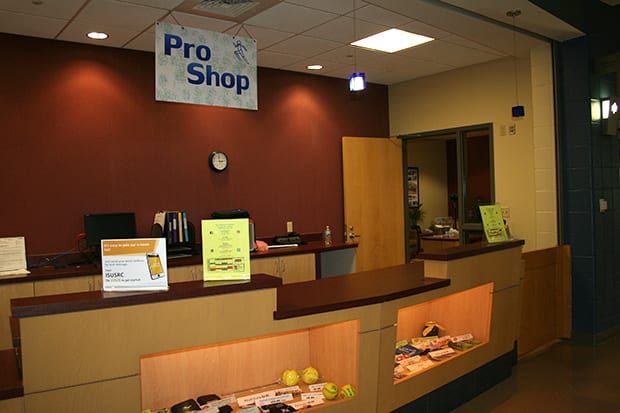
This is Part Two to Theresa Ortega’s blog series on creating a pro shop. Read Part One here: “Create a Pro Shop in Your Rec Center.”
So, you’ve decided to open a pro shop in your rec center and now you need to purchase your initial inventory. How much you spend is a major consideration. Here are some tips for maximizing your spend:
1. Product Mix: How do you decide what to sell?
The classes, services and programs you provide should give you a good idea. What would your members need to buy anyway? Pool items for swim lessons, weightlifting supplies for weightlifters and BodyPump fans, and padlocks for the lockers. Also, add things that provide convenience, such as items they might forget at home: shampoo, soap, shower loofahs, hair ties, etc. Travel sizes are a great option.
2. How to Price Your Items?
Your prices should be based on similar pricing by vendors in the area or comparable pricing online, but you can’t always compete with online vendors. Most customers would pay an extra dollar or so in order to have the product now, not have to wait for a shipment, and not have to drive elsewhere to save those few cents.
3. Is the Price Reasonable?
One way to find out is to look at the MSRP, or manufacturer’s suggested retail price. This is a good guideline. You may want to sell it below that price, but the MSRP gives you a general idea of what the product should sell for. Online retailers such as Amazon can also give you a good idea, but don’t try to compete against them on price; it’s a very poor strategy. Nevercompete on price.
4. How Many do You Order?
I’m very conservative when trying out new products, so I often only purchase one or two to see how they sell. Lesser quantities in your initial inventory will usually cost a bit more, but you won’t be out much if a couple of items don’t sell.
5. Purchase Items with a Good Markup
What is markup? Markup is the amount you sell your item for, over and above what you paid for it. I usually look for items with a 100% markup.
6. How do You Calculate the Markup?
Let’s say you purchase a pair of swim goggles for $5 for your initial inventory. You sell them for $10. Your gross profit is calculated by subtracting the cost you paid for the item (COGS, or Cost of Goods Sold) from the amount you sold it for. In this case: $10 – $5 = $5 gross profit.
If you want to write it as a percentage, you divide the gross profit by the COGS, so $5/$5 = 1.00. To make the markup a percentage, you then multiple the result by 100, so 1.00 X 100 = 100%. Your markup on this item is 100%.
7. Sell the Item for Double the Price You Paid for It
This is an easy way to remember a 100% markup in real-world terms. So if you buy a pair of pool sandals for $15, sell them for $30.
8. Why 100% Markup?
You’ll keep more of the revenue with a higher markup. This helps maximize your purchases and your revenue. You may not always want to sell an item at a 100% markup; we have softballs in our pro shop that we sell at only slightly above our cost, to pass on the savings to our students who play in the intramural games.
For next month’s blog, the third and final part of this series, I’ll examine displaying your merchandise, staff for your pro shop and incentivizing sales.










